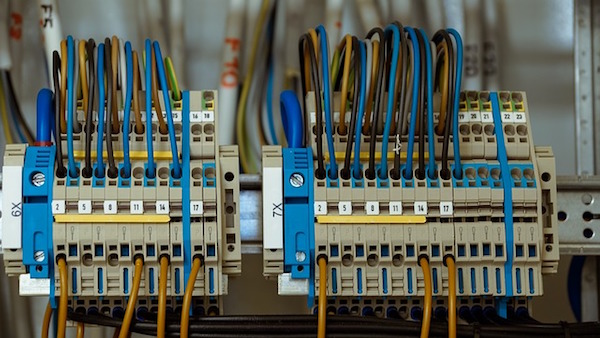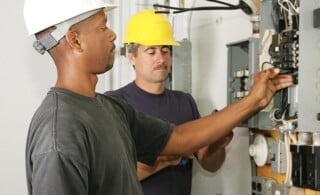
Hiring an electrical wiring contractor is often an expensive proposition. Yet, without proper expertise, trying to install or repair your own electrical wiring project can be a dangerous undertaking. Severe electrical shock, burns, and lethal electrocution can be the dire consequences of ill-advised bravado. Improper wiring installations can also lead to the bigger problems of appliance failures and circuit shorts. In some cases, electrical fires can spark and destroy your beautiful home. While shady electrical wiring contractors exist, there’s also a reason these contractors are expensive.
Safety First
Before you begin to tamper with any wiring or electrical switches, you need to make sure your home and appliances have grounding. Simply put, grounding is a way of ensuring any unintentional current that escapes from its normal path gets channeled into the Earth and not a human body. Many electrical codes now require grounding electrodes or grounding plates to create this safety feature, but older homes may not have this feature. You should make sure your home is fitted with this grounding whether you’re considering taking on a wiring project or not.
The other crucial electrical safety feature for your home is a ground-fault circuit interrupter (GFCI). In the effect that an unintentional ground is created this safety device detects the current drain and shuts off your electrical power. These devices are different than circuit breakers which protect wires from overheating and sparking. A circuit breaker doesn’t protect you from electrocution and a GFCI doesn’t protect your wiring. Again, most electrical codes now require a GFCI device for newer homes, but an older home may not have one. If you don’t know if your home has a GFCI or grounding for your appliances, you should find out before dealing with any electrical wiring project.
Ready to start your electrical wiring?
Find ProsCommon Home Wiring Projects
While these safety features usually protect you from most electrical dangers, things can still go wrong. Here are some common electrical wiring projects and some things to consider for each one.
Phone Wiring
With computer modems and fax machines going in so many homes, cable and phone wiring has become the most popular home wiring project. Many phone companies used to take care of both interior and exterior wiring. This is no longer the case. The phone company will still take care of the interior wiring but they’ll charge you a hefty price for it. Typical phone wiring is run in one of two main ways. You can run an individual wire from your outside phone box to a new phone jack or you can run wiring from an existing phone jack. Most people elect to use an existing phone jack as the jumping off point to reduce the amount of wiring you need, but if you run wiring from the outside phone box it will be easier to troubleshoot any future wiring problems.
Thermostat Wiring
If something goes wrong with your heating or cooling system, you may begin to suspect the problem lies with your thermostat wiring. You should feel free to take your thermostat off the wall to visually inspect the wiring, but you should never mess with thermostat wiring unless you know exactly what you’re doing. The wiring may look harmless but if you start messing around and change any of the connections, you can easily destroy your heating and cooling systems. Thermostat wiring is mostly control wiring, but amongst this wiring can sometimes be high voltage wiring that can instantly burn and/or kill you. Your best bet is to leave the wiring alone, eliminate other reasonable possibilities that might be causing your heating or cooling malfunction, and then call an electrician.
Ceiling Fan Wiring
With the proper safety precautions, ceiling fan wiring is a viable DIY project. Contacting the manufacturer or some basic research should give you the necessary information for the proper electrical wiring colors and functions. There are standard colors but also many exceptions to the rule. One thing you don’t want to do is let your ceiling fan motor run on a dimmer switch designed for a light fixture. This will cause the motor to hum. An electrical wiring contractor can replace your original electrical wiring to accommodate additional ceiling fan options. For example, an electrician can give you an extra wall switch so you can control the fan and the light separately.
Hot Tub Wiring
Too many people try to install their own hot tub wiring. Among the more complicated wiring projects, it’s probably best to leave this project to a professional unless you really know what you’re doing. Some states require that hot tub wiring is done by a certified electrician.
 Tips for Finding & Hiring an Electrician
Tips for Finding & Hiring an Electrician  Preventing Home Improvement Fraud
Preventing Home Improvement Fraud  Powerful Electrical Upgrades
Powerful Electrical Upgrades  What to Know When Hiring a Fence Installer
What to Know When Hiring a Fence Installer  Professional Carpet Cleaners vs. DIY Rentals: Which Works Best & How to Find a Pro
Professional Carpet Cleaners vs. DIY Rentals: Which Works Best & How to Find a Pro 

Are You Familiar With This Topic? Share Your Experience.